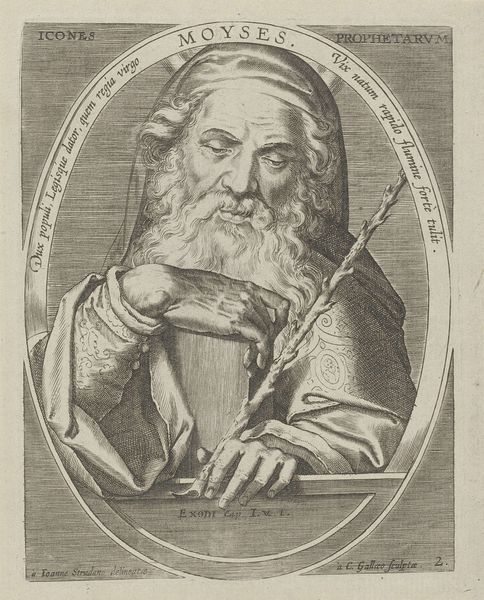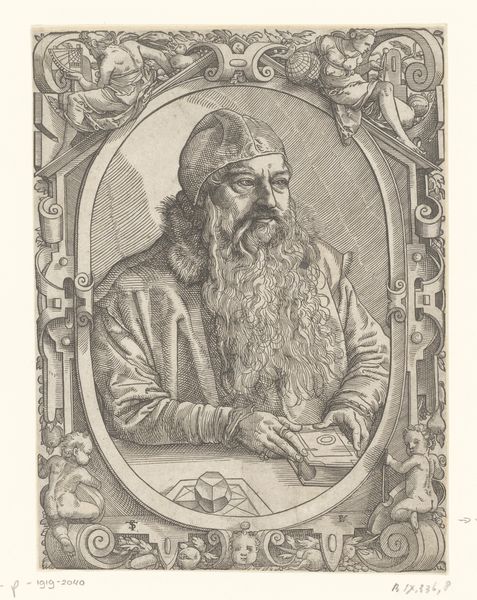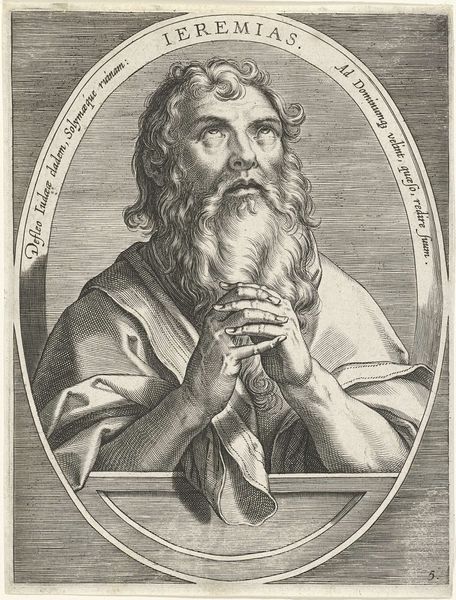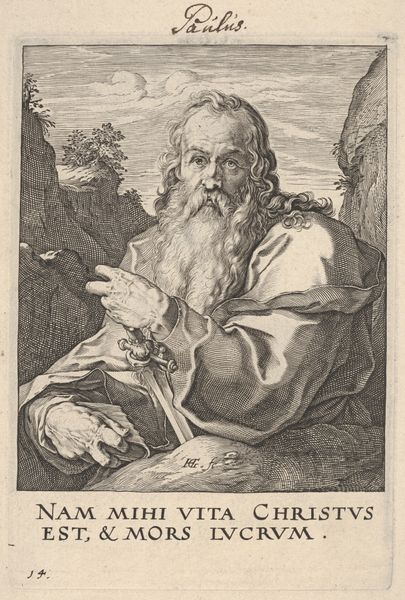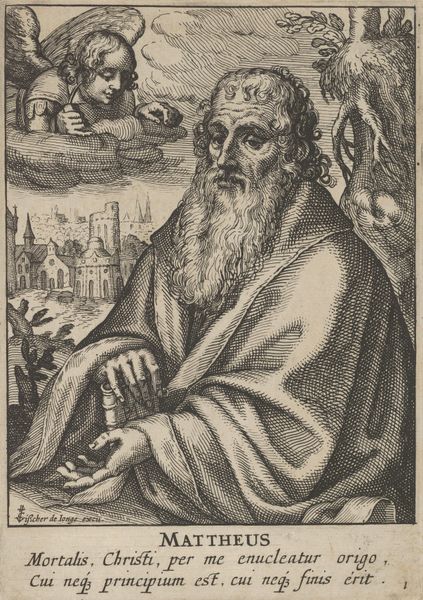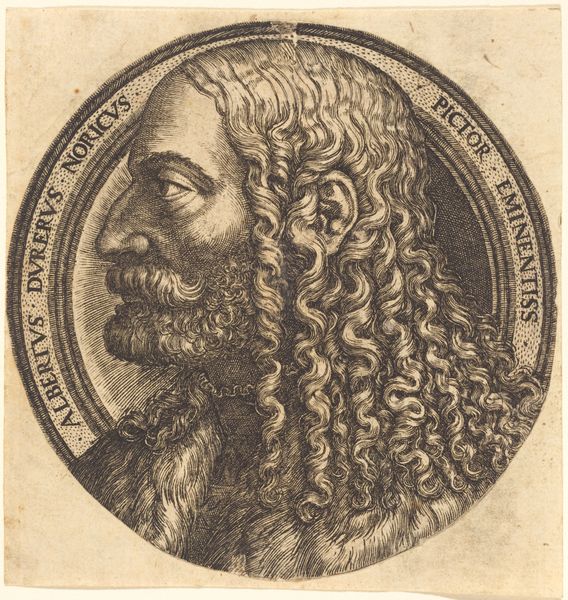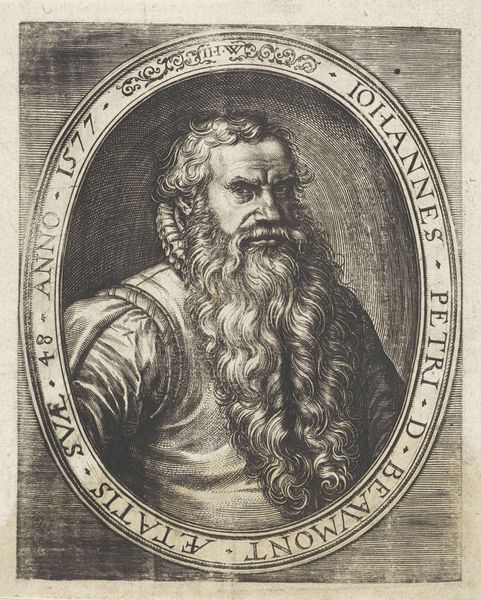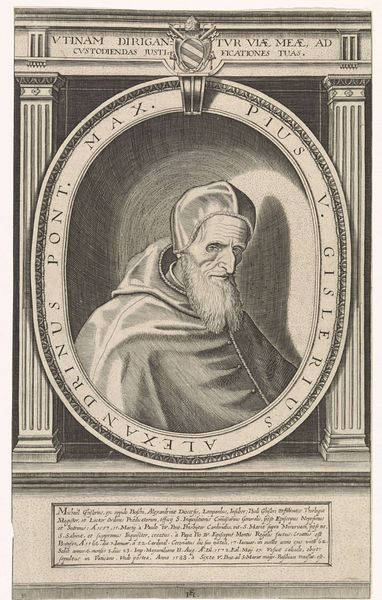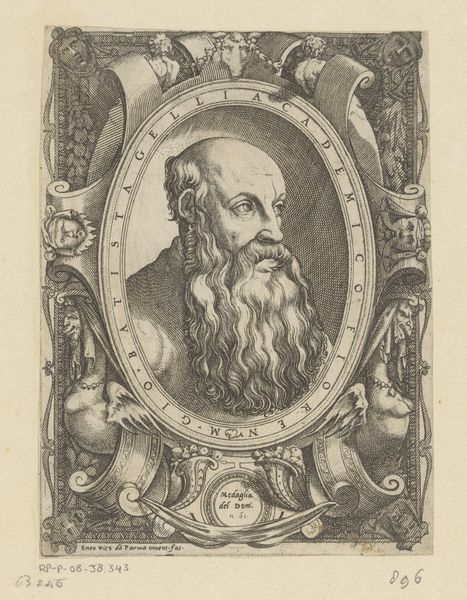
print, etching, intaglio, engraving
#
portrait
#
baroque
# print
#
etching
#
intaglio
#
mannerism
#
history-painting
#
engraving
Dimensions: plate: 13.7 x 11 cm (5 3/8 x 4 5/16 in.) sheet: 28.1 x 21 cm (11 1/16 x 8 1/4 in.)
Copyright: National Gallery of Art: CC0 1.0
This engraving of Seneca was made in the late 16th or early 17th century by Thomas de Leu. It presents us with a portrait of a man of letters, complete with the likeness, name, and classical frame of honor befitting an ancient Roman philosopher. But how would de Leu and his audience have understood this figure? Seneca lived in a time of Emperors, and in France, de Leu lived in a time of Kings. The portrait therefore invokes an idea of authority, but one that derives from wisdom, and not merely power. We should remember that at this time, the printing press had revolutionized the circulation of knowledge. Engravings such as this helped disseminate classical learning beyond the confines of universities and aristocratic libraries. Seneca's texts became available to new audiences, and this image provided a visual anchor for his ideas. To understand this image more fully, we could investigate the printing industry in early modern France, and the reception of classical philosophy during the reign of Louis XIII. Art history is not just about aesthetics; it is about understanding the social life of images.
Comments
No comments
Be the first to comment and join the conversation on the ultimate creative platform.
